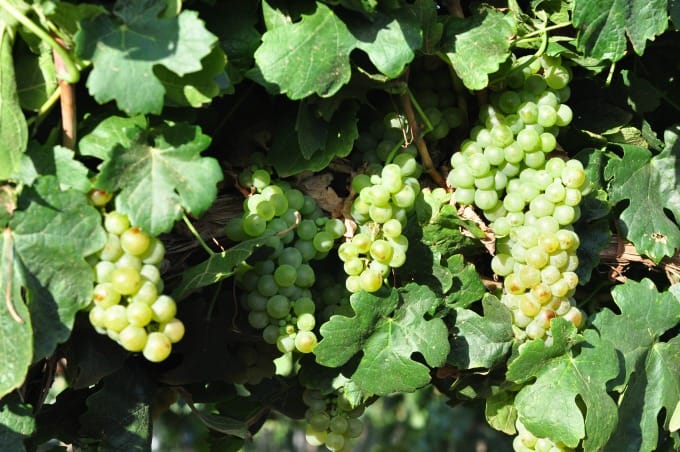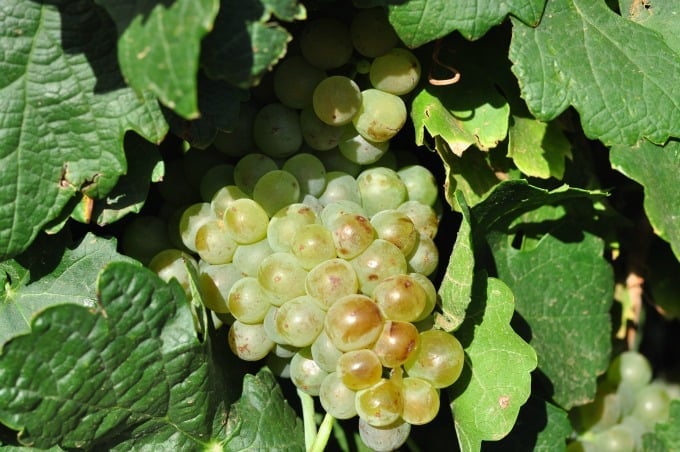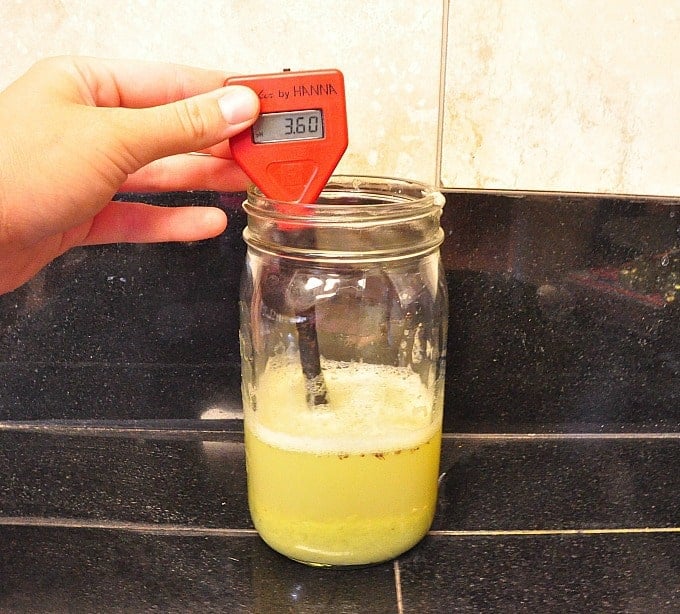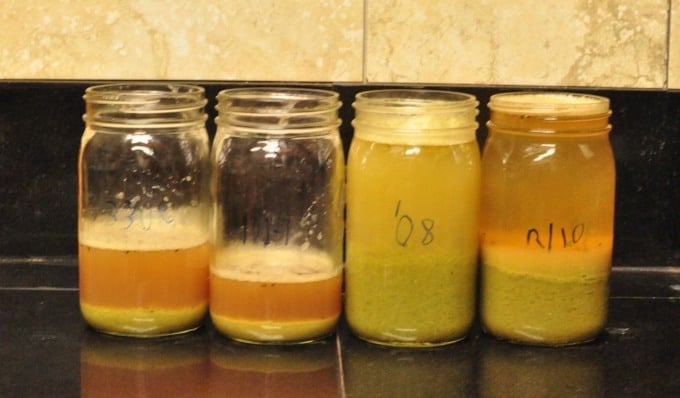Roussanne – Testing the pH and Brix
It is that time of year again – time to begin checking to see just how ripe the grapes are and if they are ready to harvest. For us, grape harvest is the culmination of the work we have done all year – a very exciting time!
The Roussanne grapes are our earliest ripening variety. When fully ripe, the Roussanne (a French white grape) has characteristic tastes of almond, pear, honey and pineapple. If we lived in France, we would have to abide by the rules set by the French government. These rules would dictate exactly how the grapes were grown, the standard for ripeness and the way the wine was made. But thankfully, we don’t and ripeness is determined by a variety of factors.
We have written agreements for our Roussanne with seven different wineries wherein they will purchase the crop from a particular defined section. If there is a banner yield like last year, they had to swallow hard to take and process it all (6-9 tons each). This year, however, because of the spring crop loss (thanks to the late freeze), each of their individual plots only will yield no more than a ton. This was too little for a couple wineries, and they asked if we could sell their designated crops to other wineries. Which we did.
You can tell a lot about the ripeness of the grape just by taste. And, I can tell you, they are much riper and sweeter now than they were! Granted, some of us began sampling while grapes were still hard, little green knots. I, on the other hand, prefer my mouth stay right-side-in rather than inside-out.
The seeds are another indicator of the ripeness of grapes. When they are ripe, the seeds become brown, crunchy and are easily separated from the pulp of the grape. If the grape is not quite ripe, the seeds will be green (or tan) and cling to the pulp of the grape.
The wineries also like to know what the Brix and pH are before harvest. We use two instruments, (both purchased from my affiliate partner) a pH meter and a refractometer. The refractometer measures the Brix which is the amount of sugar in the grapes and the pH meter is used to tell, well the pH level or acidity of the grapes.
We take a representative sample by picking clusters of grapes at predetermined places in the vineyard.
In our kitchen, we weigh the clusters and then crush them in an old fashioned jelly press to extract the juice. As the grapes are mashed, the juice flows down into the bowl underneath.
To measure the Brix, a drop of juice is placed on the hydrometer and looking through the eye piece a reading is taken. This tells the amount of sugar in the grapes. To give an example, if the Brix are 18, the grapes will still taste tart and “green”. At 24 Brix, the grapes will be tasty and sweet.
Finally, the pH is tested using a pH meter. After being calibrated, the probe of the meter is placed in the juice and the meter gives a digital reading. You can see that this Roussanne has a pH of 3.6.
Most winemakers prefer to have the pH under 4.0 but have come to realize that here on the high plains of Texas, our pH goes higher without jeapordizing quality.
Once the measurements are taken, John contacts all the wineries and they make the final decision concerning harvest based on these measurements and John’s input about the taste and seeds. Each winemaker has their own preferences of the Brix level and range of pH for their style of wine.
Of the five wineries who will receive this year’s Roussanne grapes, one has already planned to harvest – last night at midnight. Next week I will have photos of that. Meanwhile, here is a pic of the juice.
I realize the juice is not very exciting to you, but to us it means harvest time!






Juice is not as exciting to us only because we don’t have the investment that you do into it. I thank you for opening up your home and showing me, the non farmer, the farming side of the operation. I find it very interesting and informative. You use pictures and descriptions that get to the heart of the matter. I ENJOY it immensely!
Sarah, thanks for the encouragement!
The first of the harvest – incredibly exciting. I’m just so glad you have something to harvest after that tough weather this spring! Very interesting post. That juice sounds….yummy.